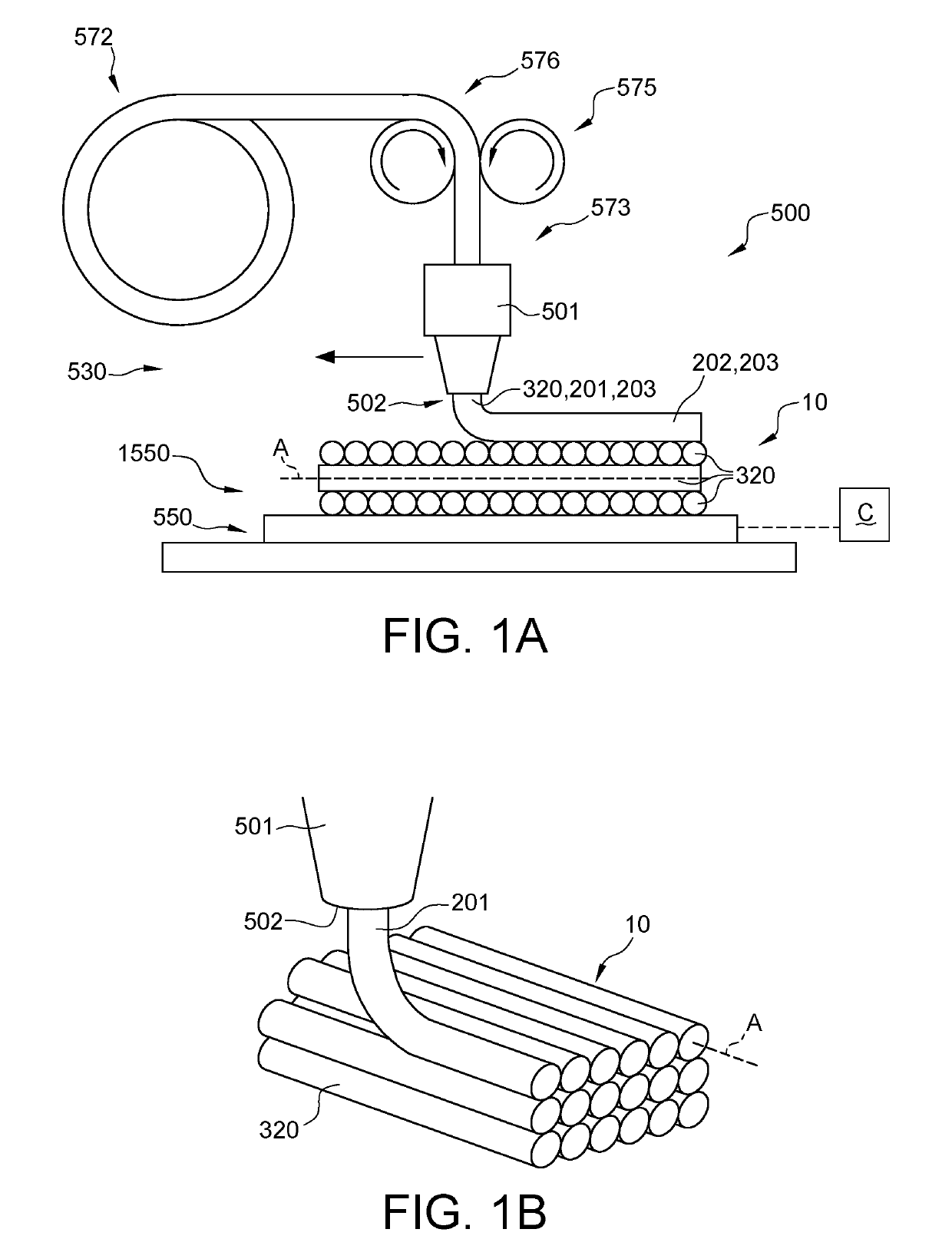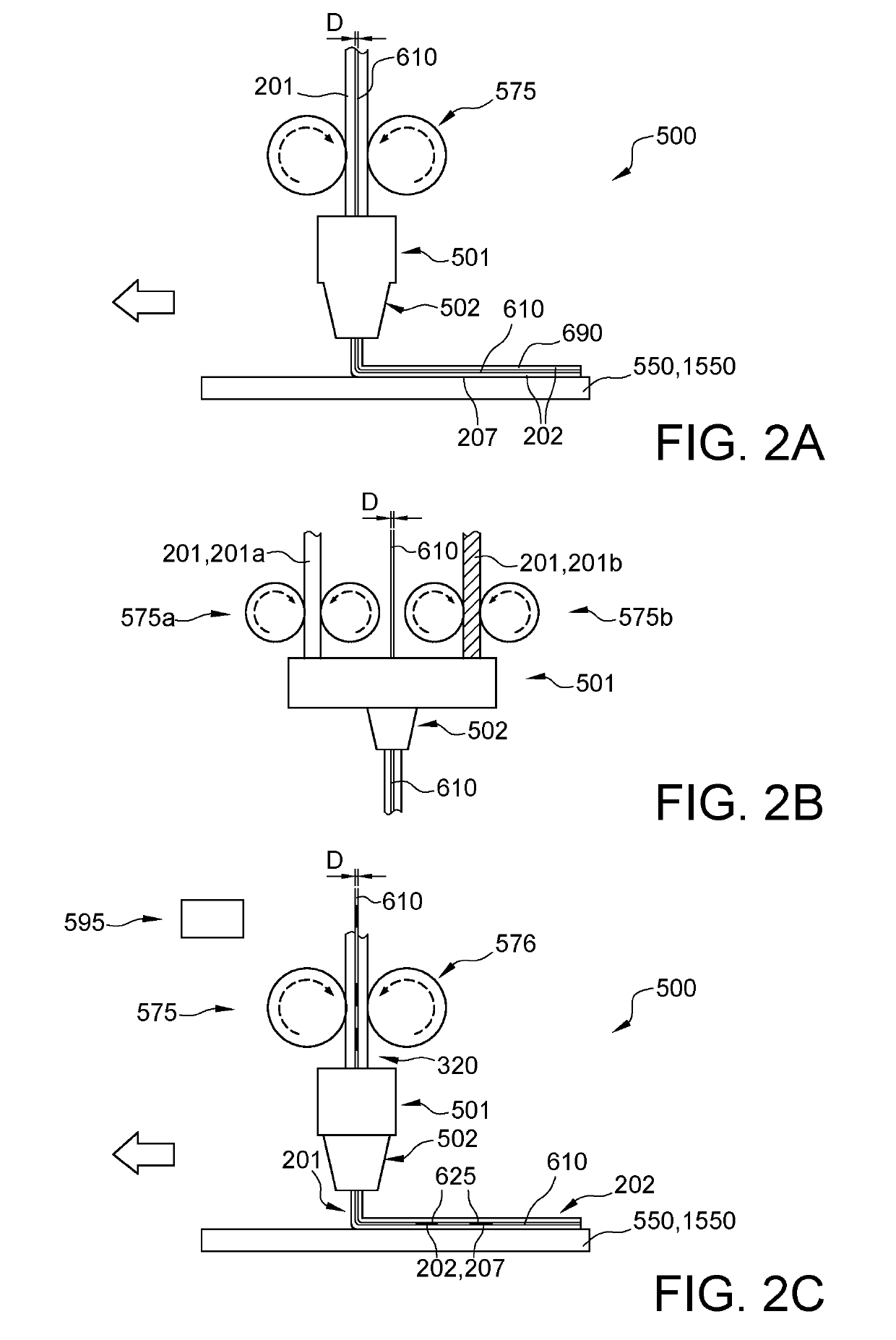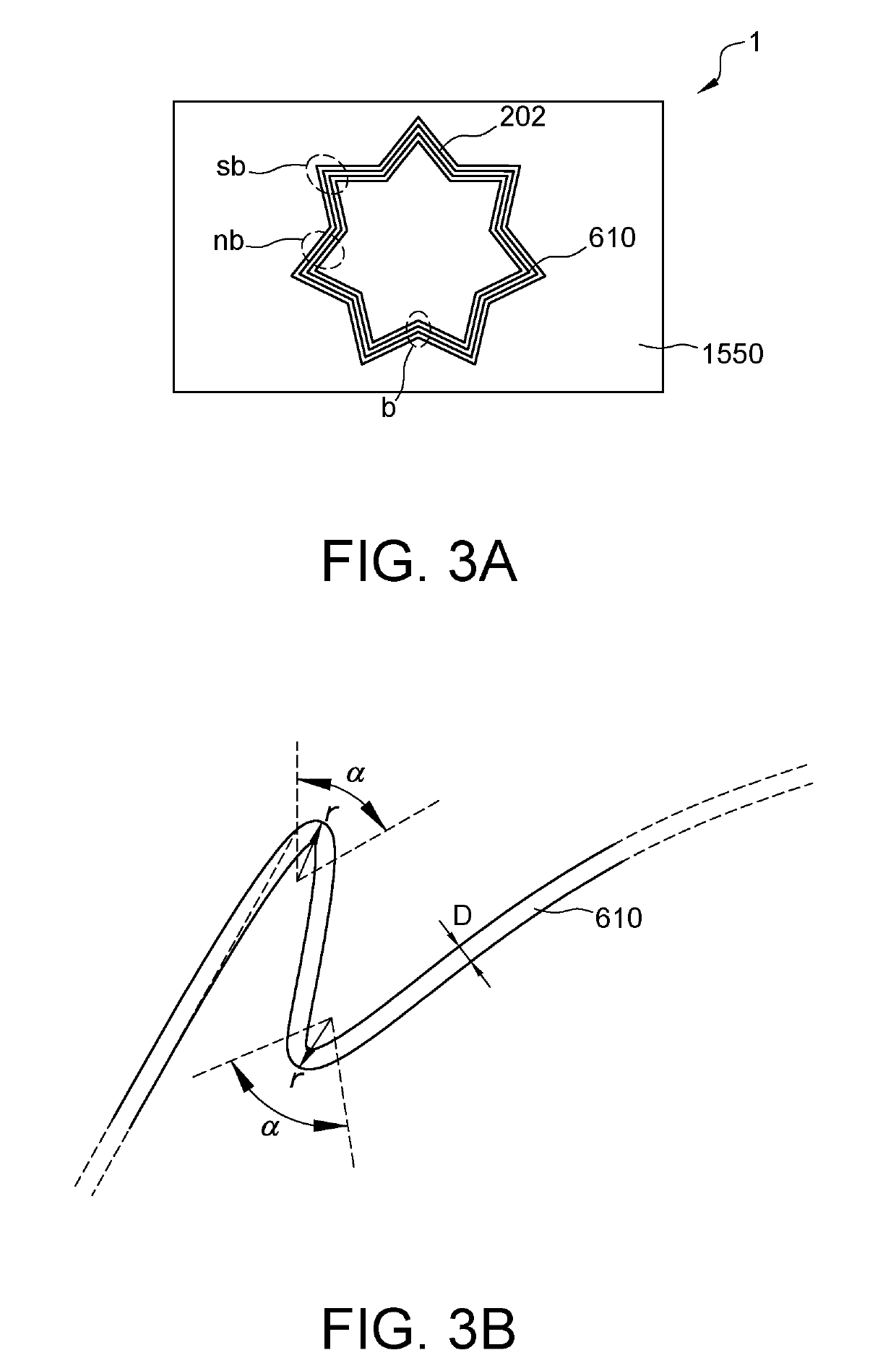3D printed luminaires using optical fibers
a technology of optical fibers and luminaires, applied in the direction of additive manufacturing processes, lighting and heating apparatus, instruments, etc., can solve the problems of relatively low thermal conductivity and poor stability of photocurable materials to be useful for injection molding applications
- Summary
- Abstract
- Description
- Claims
- Application Information
AI Technical Summary
Benefits of technology
Problems solved by technology
Method used
Image
Examples
Embodiment Construction
[0062]FIG. 1a schematically depicts some aspects of the 3D printer. Reference 500 indicates a 3D printer. Reference 530 indicates the functional unit configured to 3D print, especially FDM 3D printing; this reference may also indicate the 3D printing stage unit. Here, only the printer head for providing 3D printed material, such as a FDM 3D printer head is schematically depicted. Reference 501 indicates the printer head. The 3D printer of the present invention may especially include a plurality of printer heads, though other embodiments are also possible. Reference 502 indicates a printer nozzle. The 3D printer of the present invention may especially include a plurality of printer nozzles, though other embodiments are also possible. Reference 320 indicates a filament of printable 3D printable material (such as indicated above). For the sake of clarity, not all features of the 3D printer have been depicted, only those that are of especial relevance for the present invention (see furt...
PUM
| Property | Measurement | Unit |
|---|---|---|
| core diameter | aaaaa | aaaaa |
| core diameter | aaaaa | aaaaa |
| core diameter | aaaaa | aaaaa |
Abstract
Description
Claims
Application Information
 Login to View More
Login to View More - R&D
- Intellectual Property
- Life Sciences
- Materials
- Tech Scout
- Unparalleled Data Quality
- Higher Quality Content
- 60% Fewer Hallucinations
Browse by: Latest US Patents, China's latest patents, Technical Efficacy Thesaurus, Application Domain, Technology Topic, Popular Technical Reports.
© 2025 PatSnap. All rights reserved.Legal|Privacy policy|Modern Slavery Act Transparency Statement|Sitemap|About US| Contact US: help@patsnap.com



